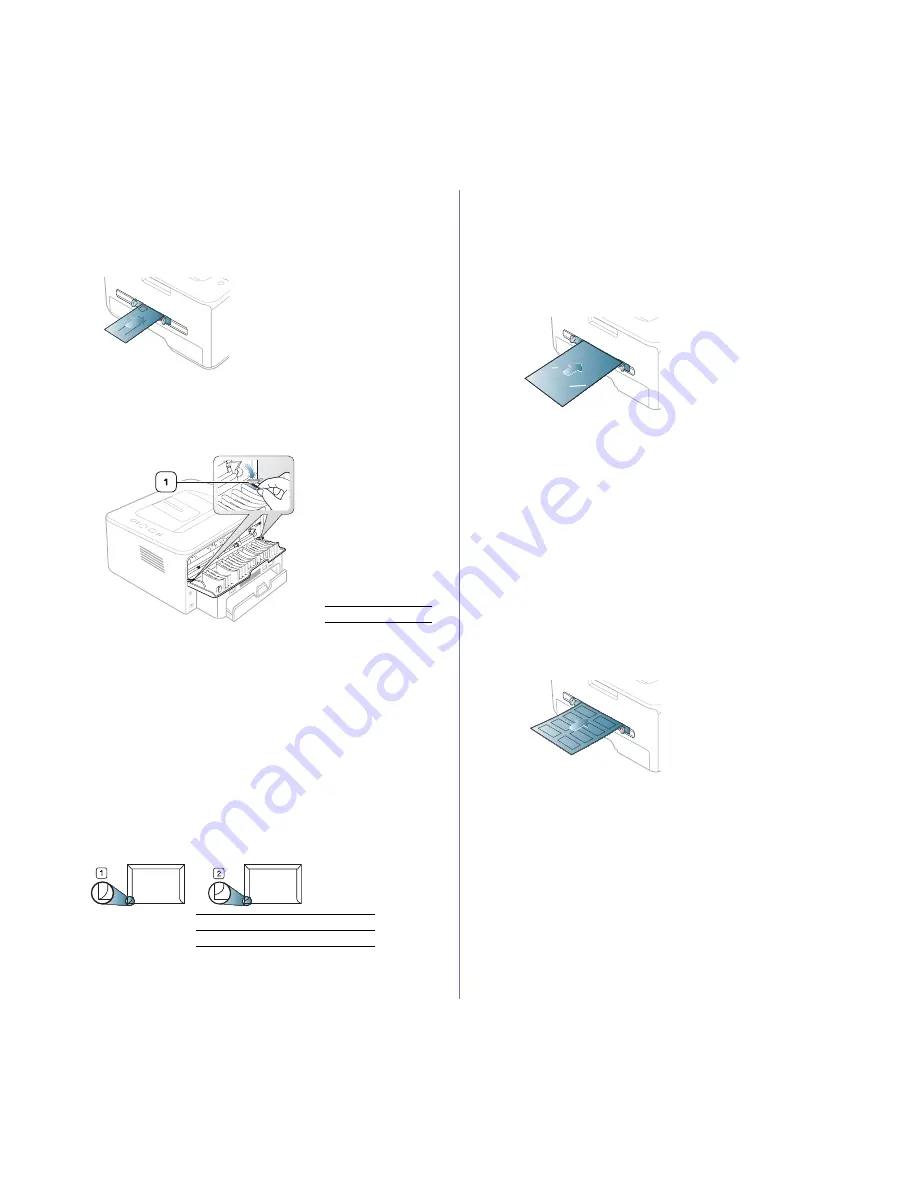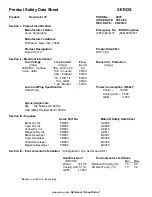
Media and tray
_ 14
Envelope
Successful printing on envelopes depends upon the quality of the
envelopes.
To print an envelope, the stamp area is on the left side and the end of the
envelope with the stamp area enters the printer first and center of the
manual tray.
If envelopes are printed out with wrinkles, crease or black bold lines, open
the rear cover and pull down the pressure lever and try printing again. Keep
the rear cover opened during printing.
•
When selecting envelopes, consider the following factors:
-
Weight:
The weight of the envelope paper should not exceed
90 g/m
2
otherwise, jam may occur.
-
Construction:
Prior to printing, envelopes should lie flat with less
than 6 mm curl, and should not contain air.
-
Condition:
Envelopes should not be wrinkled, nicked, nor
damaged.
-
Temperature:
Use envelopes that are compatible with the heat and
pressure of the machine during operation.
•
Use only well-constructed envelopes with sharp-and well-creased folds.
•
Do not use stamped envelopes.
•
Do not use envelopes with clasps, snaps, windows, coated lining,
self-adhesive seals, or other synthetic materials.
•
Do not use damaged or poorly made envelopes.
•
Be sure the seam at both ends of the envelope extends all the way to
the corner of the envelope.
1
Acceptable
2
Unacceptable
•
Envelopes with a peel-off adhesive strip or with more than one flap that
folds over to seal must use adhesives compatible with the machine’s
fusing temperature (about 170°C(338 °F) for 0.1 second. The extra flaps
and strips might cause wrinkling, creasing, or jams, and may even
damage the fuser.
•
For the best print quality, position margins no closer than 15 mm from
the edges of the envelope.
•
Avoid printing over the area where the envelope’s seams meet.
Transparency
To avoid damaging the machine, use only transparencies designed for use
in laser printers.
•
Transparencies used in the machine must be able to withstand
machine’s fusing temperature.
•
Place them on a flat surface after removing them from the machine.
•
Do not leave unused transparencies in the paper tray for long periods of
time. Dust and dirt may accumulate on them, resulting in spotty printing.
•
To avoid smudging caused by fingerprints, handle them carefully.
•
To avoid fading, do not expose printed transparencies to prolonged
sunlight.
•
Ensure that transparencies are not wrinkled, curled, or have any torn
edges.
•
Do not use transparencies that separates from the backing sheet.
•
To prevent transparencies from sticking to each other, do not let the
printed sheets stack up as they are begin printed out.
Labels
To avoid damaging the machine, use only labels designed for use in laser
machines.
•
When selecting labels, consider the following factors:
-
Adhesives:
The adhesive material should be stable at your
machine’s fusing temperature (about 170°C(338 °F).
-
Arrangement:
Only use labels with no exposed backing between
them. Labels can peel off sheets that have spaces between the
labels, causing serious jams.
-
Curl:
Prior to printing, labels must lie flat with no more than 13 mm
of curl in any direction.
-
Condition:
Do not use labels with wrinkles, bubbles, or other
indications of separation.
•
Make sure that there is no exposed adhesive material between labels.
Exposed areas can cause labels to peel off during printing, which can
cause paper jams. Exposed adhesive can also cause damage to
machine components.
1
Pressure lever
















































